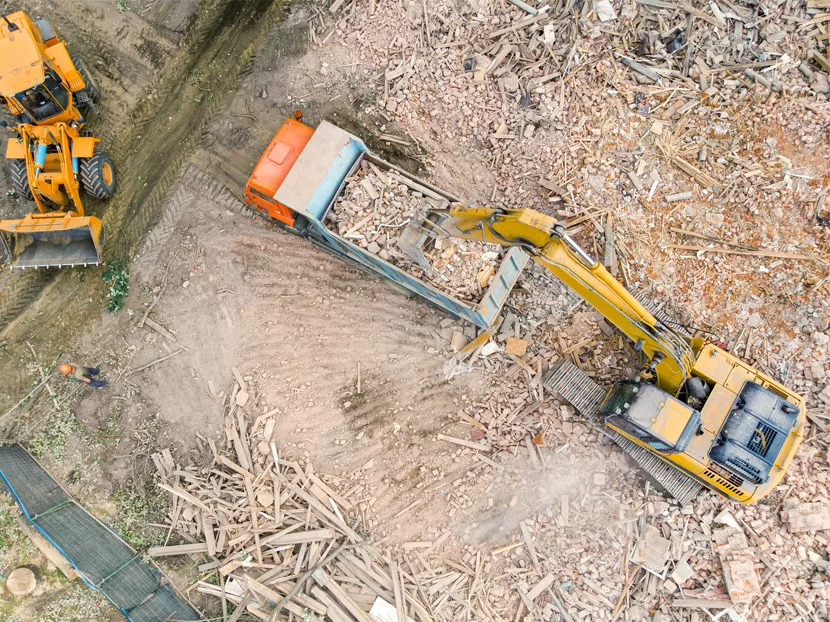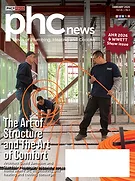About two-thirds of the waste generated in the United States comes from construction and demolition dumpsters. These large-scale projects create an enormous amount of waste in a short amount of time. How can we reduce this construction and demolition waste and inject more technology into rollaway dumpsters?
The solution to the construction waste problem is pretty simple, in the long term. The best way to reduce waste is to build structures that are made to last a long time. The classic “reduce, reuse, recycle” phrase is in that order for a reason.
Reducing the amount of waste is the best first step. The other two still require energy to process or ship materials.
TRUE is a spinoff of the U.S. Green Building Council. It helps build waste strategies, similar to the way the LEED rating system is used for construction. The organization describes the different ways to divert waste from the landfill:
- Reduction: Efforts to reduce the generation of materials.
- Reuse: Avoid disposal.
- Composting: Organic matter decomposed by microorganisms into a soil amendment.
- Recycling: Materials converted into manufacturing feedstock material and used in the creation of new products.
- Anaerobic digestion: Organic matter is broken down by microorganisms into a soil amendment in the absence of oxygen.
- Other: This may or may not include waste-to-energy incineration.
The average lifespan of concrete in a building in the United States is 50 to 100 years, says the U.S. Environmental Protection Agency. In my neighborhood, there is a 32-acre lot with 437,000 square feet of multi-use buildings set for demolition to make room for a new development comprising of 2.8 million square feet of space.
The original structures were built in 1964. The area has grown quickly and space is needed; however, this seems like a short amount of time for a building to become a pile of concrete garbage. The most sustainable future is one where buildings are designed for hundreds of years.
In a 2015 report, the EPA estimated that 548 million tons of construction and demolition (C&D) waste was generated — double the amount of municipal solid waste (MSW) created. Generally, MSW waste is what we know as garbage that is picked up curbside from homes and businesses.
When I was in college, I took a class called community health issues. We received credit for taking a tour of the local landfill. It was eye-opening how much garbage we produce every day. I could tell that the landfill employee who gave the tour had explained a million times over that most of the stuff they receive shouldn’t be in the same truck as the “garbage.”
While nearly 35 percent of MSW waste is recycled, almost 80 percent of the stuff ending up in landfills could have been recycled or reused, notes Rubicon, a technology company focused on waste, recycling and smart city solutions.
As an aside, I found a shocking stat while researching this article on the Rubicon site: “In the United States, we throw away 2.5 million plastic bottles every hour — about 42,000 per minute, or about 695 per second.”
As for C&D waste, it is a predictable mix. Drywall and plaster comprise the most significant portion of waste found in construction dumpsters. About 84 percent of waste in demolition dumpsters is concrete or asphalt concrete.
Both concrete and asphalt can be crushed and reused in many scenarios. However, the metal, glass, wood and other recyclables are sometimes lumped in with the mix, and the whole dumpster is written off as 100 percent garbage.
Smart demolition
It is logistically challenging to sort the demolition rubble well. Construction timeframes are short, so there isn’t a ton of opportunity to manually sort through the dumpster when a multistory building is coming down. Since site space is frequently limited, the best scenario is for the mess to disappear quickly.
What would be the smartest way to demolish a building? If you could predict the amounts of different materials in a building and then sort it all on-site, you could streamline a messy task. Building information modeling scans of buildings’ pre-demolition are on the horizon. Someone could come to the demolition site, set up scanners all over the building to identify and quantify all the materials in a 3D rendering.
Before you took anything apart, you would know precisely how many dumpsters of each of the materials you would need to plan for.
If you knew what to expect in terms of materials, the trick would be to sort the stuff faster. Instead of filling dumpsters with a mix of all the debris from a building, then sorting it offsite or taking the whole container to a landfill, robots could help. The jobsites of the future could have a series of different containers leaving the site neatly organized by material.
Engineering.com describes a system built by AMP Robotics that may make on-site sorting a reality. Waste is moved onto a conveyor belt that can deal with large amounts of debris. The first robot can grab and sort chunks up to 88 pounds. It selectively moves concrete, wood and metal off the conveyor belt into bins. Next, two high-speed arms sort the smaller pieces. They can grab up to 160 pieces per minute.
In total, this system can organize up to 840 metric tons of waste in a day (about 24 sports cars of weight) into different dumpsters filled with concrete, wood, plastics, electronics and metals. This technology would hopefully scale to be able to deal with larger and larger pieces.
While single-stream recycling is the easiest way to get garbage away from us, it also is the quickest way to fill a landfill with reusable, recyclable or otherwise valuable materials. The smarter and faster we can sort garbage near the source, the more we will benefit as a society.
Innovations in the waste stream will help us deal with complicated messes. The smartest decision is still to delay demolishing buildings as long as possible by using higher-quality building materials from the start.
For more information, visit these sites:
• TRUE zero-waste rating system,
https://bit.ly/33v3dxa
• Rubicon recycling and trash statistics,
https://bit.ly/36Nu5dS
• EPA report on construction and demolition debris, https://bit.ly/2qztHyS
• ScienceDirect, BIM-based system for demolition, https://bit.ly/2NQvM1m
• Engineering.com, robots and demolition recycling, https://bit.ly/2Q5Yy0y
• EPA overview of materials, waste and recycling, https://bit.ly/2pSgtgA
• EPA fact sheet on sustainable materials management, https://bit.ly/2PXlyPl






